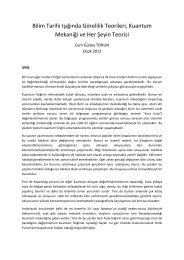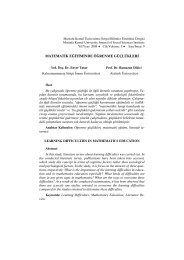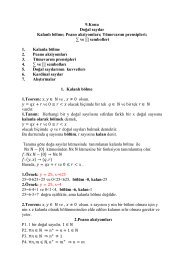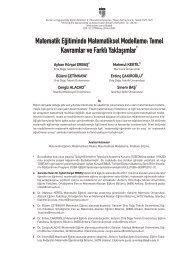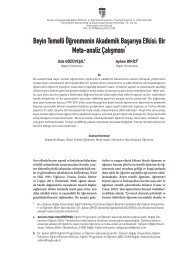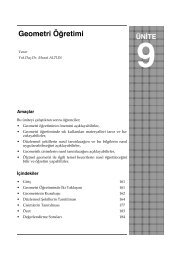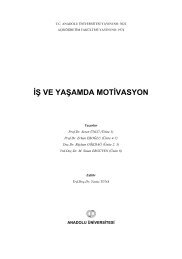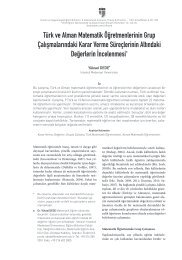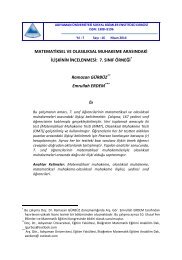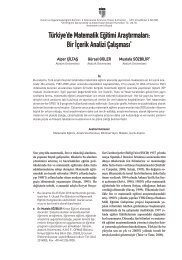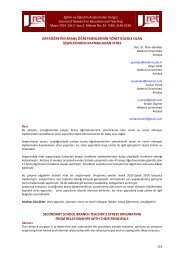Ufuk-U_niversitesi-SBE-Dergisi-S-ayı-5-kopya
Ufuk-U_niversitesi-SBE-Dergisi-S-ayı-5-kopya
Ufuk-U_niversitesi-SBE-Dergisi-S-ayı-5-kopya
Create successful ePaper yourself
Turn your PDF publications into a flip-book with our unique Google optimized e-Paper software.
overall six factor structure which was validated using confirmatory factor analysis inDemirel’s adaptation study (2009). The instrument’s reliability coefficient was found .91 forthe inventory, .73 for the construct measuring memory strategies, .75 for the constructmeasuring cognitive strategies, .66 for the construct measuring compensation strategies, .83for the construct measuring metacognitive strategies, .67 for the construct measuring affectivestrategies, and .66 for the construct measuring social strategies.2.3 Procedure and AnalysisThe instruments were piloted before they were distributed to the participants of thisstudy. Changes have been made in the proficiency test and the use of the Turkish version ofthe language learning inventory was agreed on. Before the distribution of the instruments eachparticipant signed a consent form. Next, they were asked to fill out the demographicinformation form, proficiency test and SILL. This process took 30 minutes and was carriedout in a classroom. The data were analyzed using the statistical package of social sciences(SPSS) 20.3. ResultsThe independent samples T-tests were conducted to determine the difference betweenthe scores of the number of languages known and the native language of the instructor. All theassumptions were checked and no violation of the assumptions was found. One otherfundamental assumption was the English proficiency level of the groups. Even though all theparticipants were elementary students in the English language, which is the second languagefor the bilingual participants and the third or fourth language of multilingual participants, anEnglish proficiency test was administered which showed that there was no statisticaldifference between the bilingual (M = 53.46; SD = 11.992) and multilingual (M = 55.86; SD =14.754) group’s English proficiency score (t (68) = .749, p > .05).The analyses revealed a main effect of languages known on the SILL score (t (68) =2.209, p < .05). Moreover, there is a significant difference between the direct strategies andlanguages known (t (68) = 2.864, p < .01), but no significant difference between the indirectstrategies and the languages known (t (68) = 1.124, p > .05). More specifically, a statisticallysignificant difference was found between the memory strategies and the languages known (t(68) = 4.859, p < .001) and a marginally significant difference between the cognitivestrategies and the languages known (t (68) = 1.988, p = .051); however, there was no main66





